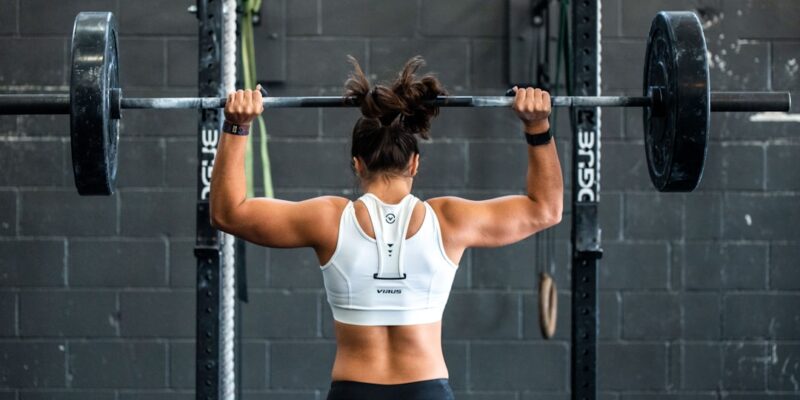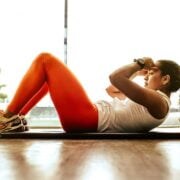
10 Simple and Effective Exercises to Boost Your Fitness Journey
Exercise is an essential component of a healthy lifestyle. It not only helps to maintain a healthy weight, but it also improves cardiovascular health, increases strength and flexibility, and enhances mental well-being. However, many people struggle to find the time or motivation to exercise regularly. That’s where simple and effective exercises come in. These exercises can be done anywhere, anytime, and require little to no equipment. In this article, we will explore the benefits of regular exercise and provide step-by-step instructions for a variety of simple exercises that target different muscle groups.
Key Takeaways
- Regular exercise has numerous benefits for overall health and well-being.
- Warm-up exercises are important to prepare the body for more intense activity.
- Squats are an effective lower body workout that can be done anywhere.
- Push-ups are a great way to build upper body strength without equipment.
- Planks are a simple yet effective way to strengthen the core muscles.
Benefits of Regular Exercise
Regular exercise offers numerous benefits for overall health and well-being. Firstly, it improves cardiovascular health by strengthening the heart and improving blood circulation. This reduces the risk of heart disease, high blood pressure, and stroke. Exercise also helps to build strength and flexibility in the muscles and joints, which can prevent injuries and improve mobility.
Furthermore, exercise has a positive impact on mental health. It releases endorphins, which are natural mood boosters, and reduces stress and anxiety. Regular exercise has also been shown to improve sleep quality, increase self-confidence, and enhance cognitive function.
Warm-up Exercises to Get Started
Before diving into any exercise routine, it is important to warm up the body to prevent injury and prepare the muscles for activity. Simple warm-up exercises can be done in just a few minutes and require no equipment.
Jumping jacks are a great way to get the heart rate up and warm up the entire body. Start by standing with your feet together and arms by your sides. Jump your feet out wide while simultaneously raising your arms overhead. Then jump back to the starting position. Repeat this motion for 30 seconds to 1 minute.
Another effective warm-up exercise is arm circles. Stand with your feet shoulder-width apart and extend your arms out to the sides at shoulder height. Make small circles with your arms, gradually increasing the size of the circles. After 10-15 seconds, reverse the direction of the circles. Continue for 30 seconds to 1 minute.
Squats: The Ultimate Lower Body Workout
| Exercise | Benefits | Repetitions | Sets |
|---|---|---|---|
| Squats | Builds lower body strength, improves balance and posture, burns calories | 10-12 | 3-4 |
| Jump Squats | Increases explosive power, improves cardiovascular health | 8-10 | 3-4 |
| Sumo Squats | Targets inner thighs, glutes and hamstrings | 12-15 | 3-4 |
| Bulgarian Split Squats | Improves balance, targets quads and glutes | 10-12 | 3-4 |
Squats are one of the most effective exercises for building lower body strength and improving overall fitness. They target the quadriceps, hamstrings, glutes, and calves.
To perform a squat, start by standing with your feet shoulder-width apart. Engage your core and keep your chest lifted. Bend your knees and lower your hips back and down as if you are sitting into a chair. Keep your weight in your heels and ensure that your knees do not extend past your toes. Lower down until your thighs are parallel to the ground, then push through your heels to return to the starting position. Repeat for 10-15 repetitions.
Push-ups: Building Upper Body Strength
Push-ups are a classic exercise that targets the chest, shoulders, triceps, and core muscles. They are an excellent way to build upper body strength and improve posture.
To perform a push-up, start in a high plank position with your hands slightly wider than shoulder-width apart and your feet together. Engage your core and lower your body down towards the ground by bending your elbows. Keep your body in a straight line from head to toe. Push through your palms to return to the starting position. If you are unable to perform a full push-up, you can modify by dropping to your knees or performing push-ups against a wall or elevated surface.
For those looking for a challenge, there are several advanced variations of push-ups that can be incorporated into your routine. These include diamond push-ups, where you place your hands close together in a diamond shape, and decline push-ups, where you elevate your feet on a step or bench.
Planks: Strengthening Your Core
A strong core is essential for overall fitness and injury prevention. Planks are a simple and effective exercise that targets the abdominal muscles, as well as the shoulders, back, and glutes.
To perform a plank, start in a high plank position with your hands directly under your shoulders and your feet together. Engage your core and keep your body in a straight line from head to toe. Hold this position for 30 seconds to 1 minute, or as long as you can maintain proper form. To modify, you can drop to your forearms or perform side planks to target the obliques.
Lunges: Improving Balance and Stability
Lunges are a great exercise for improving balance, stability, and lower body strength. They target the quadriceps, hamstrings, glutes, and calves.
To perform a lunge, start by standing with your feet hip-width apart. Take a big step forward with your right foot and lower your body down until both knees are bent at a 90-degree angle. Keep your chest lifted and your weight in your front heel. Push through your front heel to return to the starting position. Repeat on the other side. Aim for 10-15 repetitions on each leg.
For beginners or those with knee issues, it is important to start with a shallow lunge and gradually increase the depth as you build strength and flexibility.
Burpees: Full-Body Cardiovascular Exercise
Burpees are a challenging full-body exercise that combines strength training with cardiovascular conditioning. They target multiple muscle groups, including the chest, shoulders, arms, core, glutes, and legs.
To perform a burpee, start by standing with your feet shoulder-width apart. Lower down into a squat position and place your hands on the ground in front of you. Kick your feet back into a high plank position. Perform a push-up by bending your elbows and lowering your body towards the ground. Push through your palms to return to the high plank position. Jump your feet back up towards your hands and explosively jump up into the air, reaching your arms overhead. Land softly and immediately lower back down into a squat to begin the next repetition. Aim for 8-10 repetitions.
For beginners, burpees can be modified by eliminating the push-up or stepping back into a plank instead of jumping. As you become more advanced, you can add a tuck jump or a knee tuck at the top of the movement for an extra challenge.
Jumping Jacks: Increasing Heart Rate and Circulation
Jumping jacks are a simple yet effective exercise that increases heart rate and improves circulation. They target the legs, arms, and cardiovascular system.
To perform a jumping jack, start by standing with your feet together and arms by your sides. Jump your feet out wide while simultaneously raising your arms overhead. Then jump back to the starting position. Repeat this motion for 30 seconds to 1 minute.
Jumping jacks can be modified by stepping out to the side instead of jumping or by performing half jacks, where you only raise your arms halfway.
Cool-down Exercises to Finish Strong
After completing a workout, it is important to cool down and allow the body to recover. Cool-down exercises help to gradually lower the heart rate, prevent muscle soreness, and improve flexibility.
Stretching is an essential component of a cool-down routine. Focus on stretching all major muscle groups, holding each stretch for 15-30 seconds. Some effective stretches include standing quad stretches, hamstring stretches, chest stretches, and tricep stretches.
Deep breathing exercises are also beneficial for relaxation and stress reduction. Take slow, deep breaths in through the nose and out through the mouth. Focus on filling the lungs with air and exhaling fully.
Incorporating simple and effective exercises into your daily routine can have a profound impact on your overall health and well-being. These exercises can be done anywhere, anytime, and require little to no equipment. From squats and push-ups to planks and lunges, there are a variety of exercises that target different muscle groups and offer numerous benefits, including improved cardiovascular health, increased strength and flexibility, and better mental health. By taking just a few minutes each day to move your body, you can improve your fitness and enhance your quality of life. So why wait? Start incorporating these exercises into your daily routine and reap the rewards of a healthier, happier you.
Looking for a unique way to enhance your exercise routine? Check out Wave Magnets’ article on the benefits of magnetic therapy for fitness enthusiasts. This informative piece explores how magnetic therapy can help improve circulation, reduce muscle soreness, and enhance overall performance during workouts. Discover the science behind this innovative approach to exercise recovery by clicking here. Don’t miss out on this opportunity to take your fitness journey to the next level!
FAQs
What is exercise?
Exercise is any physical activity that is planned, structured, and repetitive for the purpose of improving or maintaining one or more components of physical fitness.
What are the benefits of exercise?
Exercise has numerous benefits, including improving cardiovascular health, reducing the risk of chronic diseases such as diabetes and obesity, improving mental health and cognitive function, and increasing overall physical fitness and strength.
How often should I exercise?
The American Heart Association recommends at least 150 minutes of moderate-intensity aerobic exercise or 75 minutes of vigorous-intensity aerobic exercise per week, spread out over at least three days.
What types of exercise should I do?
A well-rounded exercise routine should include a combination of aerobic exercise, strength training, and flexibility exercises. Examples of each include running, weightlifting, and yoga, respectively.
What are some tips for starting an exercise routine?
Start slowly and gradually increase the intensity and duration of your workouts. Set realistic goals and track your progress. Find an exercise buddy or join a group fitness class for accountability and motivation. Consult with a healthcare professional before starting a new exercise routine, especially if you have any underlying health conditions.

















